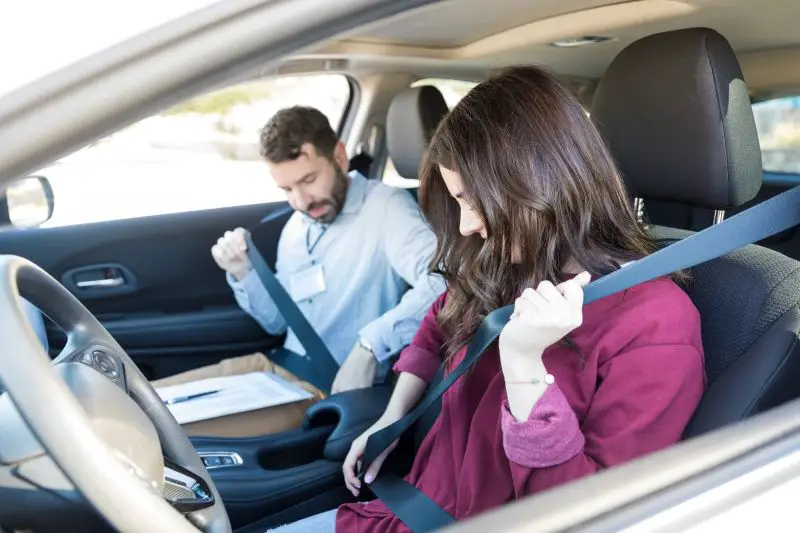Click here to get this post in PDF
Test driving is a key component of the auto-purchase process. It provides prospective buyers an opportunity to experience how a vehicle handles on the highway prior to making such a significant investment. But what can happen when that brief drive becomes an accident?
It’s a situation that raises questions. Who pays for the damage? The dealership, the driver, or the insurance companies? Knowing the rules and responsibilities of test drive accident liabilities can prevent confusion and protect everyone involved when something goes wrong.
If you were in a crash, contact an auto accident lawyer in Minneapolis for legal assistance.
The Scenario: A Routine Test Drive Turns Unexpected
Imagine this. A customer arrives at a showroom to take a new SUV back home. The salesperson rides in the front passenger seat, reading off features and encouraging the driver onto a nearby freeway. Several minutes later, another car slams on the brakes, and the customer rear-ends it.
The SUV is in a state of damage. The other party reports injury. Police are called, reports are made, and suddenly a routine test drive turns into a serious legal and financial dilemma.
This is not an unusual scenario. Every year, test drive accidents occur throughout the nation. And since more than one party is involved, figuring out who is at fault can be a complex and frustrating task.
Step 1: Who Was Driving
The very first and most straightforward factor is who was driving.
When on a test drive, the potential buyer is the one driving. That means they have firsthand control and can be held accountable for their own carelessness, the same as any other motorist on the road.
But because the car technically doesn’t belong to them, insurance coverage is stacked. The dealership’s insurance, the driver’s insurance on his or her own personal vehicle, and even the injured person’s insurance may all be involved.
Step 2: The Dealership’s Insurance
Most of the dealerships carry garage liability or garage keepers insurance for coverage of their inventory of automobiles and incidents involving customers on a test drive. These coverages will typically have clauses that cover the business and potential purchasers while the vehicle is being driven for demonstration purposes.
Typical dealership coverage:
- Damage to the test car and any other vehicles that may be involved.
- Bodily injury or property damage liability coverage for the other party.
- Medical payments for customers’ or employees’ injury in the vehicle.
For most cases, the dealership’s insurance will be primary coverage under a test drive, so it pays first before the customer’s personal policy.
But it is not always the case. Every policy has conditions, and in some states, the order of responsibility can be different based on the wording of the insurance and state laws.
Step 3: The Role of the Driver’s Personal Insurance
If you are the one test driving a car, your personal auto insurance may still come into play. Most standard policies extend coverage to “non-owned vehicles,” meaning cars you are permitted to drive temporarily.
Your insurance could help pay for:
- Damages to other vehicles if you were at fault.
- Injuries to others involved in the crash.
- Potential gaps in the dealership’s coverage.
But your insurance company can deny coverage if you were speeding, intoxicated, or driving unlicensed. It is always best to contact your insurance company first before taking a test drive, especially if you are buying a luxury or expensive car.
Step 4: When the Salesperson Is in the Car
Most test drives will have a member of the dealership staff riding in the front passenger seat. This changes the liability situation somewhat.
If the salesperson requests the driver to take a dangerous maneuver or detours while driving, the dealership is partially at fault. This is vicarious liability, whereby the employer is responsible for what the employee does while on duty.
Example:
If the salesperson persuades the customer to make an abrupt left turn when traffic is coming their way, and there is a collision, the negligence of the dealership might be the cause of the accident.
In either instance, the dealership’s insurance would compensate for damages, or the victims could sue the driver and the dealership.
Step 5: What If the Dealership’s Car Broke Down?
Sometimes, a test drive collision is the result of a mechanical failure, not of driver error. Faulty brakes, blowouts, or bad steering can all lead to wrecks.
In this case, liability might fall on the dealership or even the manufacturer. Dealerships are responsible for keeping their vehicles in roadworthy, safe condition. If they did not inspect and fix a known defect, they are liable for negligence.
Manufacturers might be brought to court with product liability claims if the failure is due to a design or manufacturing defect.
Step 6: What Happens If Someone Else Is Injured?
If a test drive accident injures other motorists, pedestrians, or passengers, those injured can sue whoever is found negligent.
The process typically occurs in the following order:
- Police reports are reviewed in order to determine who was responsible for the accident.
- Insurance adjusters from the driver’s and dealership companies investigate.
- Fault is determined based on motorists’ conduct, road conditions, and vehicle safety.
If there is equal fault, comparative fault laws can allocate responsibility in terms of each party’s percentage of fault.
For example:
- The driver was 70 percent at fault for failing to stop in time.
- The dealership was 30 percent at fault for worn brake pads.
In such a case, both insurance companies may share the cost of damages and medical expenses based on those percentages.
Step 7: What If the Test Driver Is Not Insured
Dealerships are cautious about whom they allow behind the wheel. Some require a valid license and even check insurance before a test drive. Sometimes, an uninsured driver slips through.
If that person happens to be in an accident, the dealership’s policy typically is the initial line of defense. But the insurer might seek reimbursement costs later on the driver’s part.
This is why most dealerships take photos of a customer’s license, check insurance details, and sometimes ride with the driver during the test drive in order to minimize risk.
Step 8: Protection of Self on a Test Drive
Buyers and sellers alike can minimize risk both ways by ensuring that they do the following before heading out onto the road.
For Drivers:
- Request insurance coverage before taking the car out for a test drive.
- Drive safely, adhering strictly to traffic rules and speed limits.
- Stay focused, avoiding distractions like conversations, phones, or entertainment systems.
- Don’t assume full coverage. You need to know your policy limits.
For Dealerships:
- Verify identification and insurance for all drivers.
- Keep cars in good condition and up to date on inspections.
- Train employees to deter aggressive driving practices.
- Have clear documentation of who is responsible for damages.
Following these simple steps can prevent confusion and have everyone insured in the event of an accident.
Step 9: The Legal Aftermath
When there is a test drive crash, attorneys must unravel several layers of liability. They review:
- Insurance policies on both sides
- Maintenance and training records for the dealership
- Police and witness reports
- Chronology of events leading up to the crash
Sometimes there are several claims: one against the driver, one against the dealership, and perhaps one against the manufacturer. The resolution often depends on who was at fault and whose coverage kicks in first.
Since such situations have a tendency to escalate rapidly, legal representation is necessary. An experienced personal injury attorney will guide through the web of insurance and obtain victims fair compensation for medical expenses, lost wages, and damage to their property.
A test drive should be a simple, mundane experience, but in the case of an accident, it is a complicated legal case with numerous different parties and conflicting insurance coverage. Either as a potential buyer or dealer representative, knowing how liability works can protect your money and your reputation.
If you’re in an accident on a test drive, don’t rely on the dealer or insurer to do the right thing. Call an experienced attorney right away to have your rights explained, set up coverage, and ensure the outcome is a reflection of the facts.
Also read:
How Jury Perceptions of Speed and Recklessness Influence Verdicts
Image source: elements.envato.com

